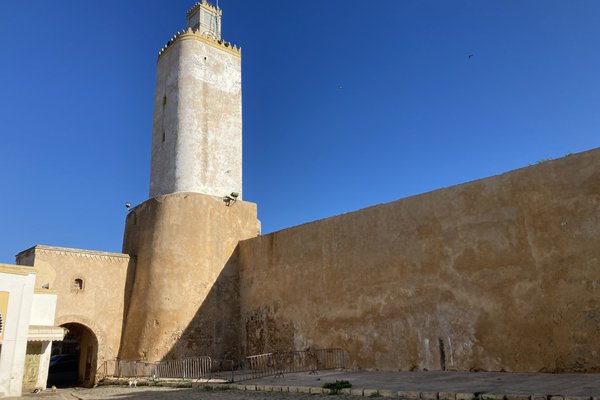Morocco
Mazagan
The Portuguese City of Mazagan (El Jadida) is a fortified port city on the Atlantic coast that was designed by the Portuguese on their way to India.
The Portuguese built a citadel here in 1514 and enlarged it into a fortification in 1541. They also constructed 4 churches within the fortification. The remaining buildings from the Portuguese period are the cistern and the Manueline Church of the Assumption. After the departure of the Portuguese, the city remained uninhabited until the mid-19th century.
Community Perspective: It’s a small, compact area with no spectacular sights, but a walk on the walls and the underground cistern are worth it.
Site Info
Official Information
- Full Name
- Portuguese City of Mazagan (El Jadida) (ID: 1058)
- Country
- Morocco
- Status
-
Inscribed 2004
Site history
History of Mazagan
- 2004: Inscribed
- Inscribed
- 2002: Deferred
- At Bureau Session; redefinition of the proposed area and name change
- Type
- Cultural
- Criteria
- ii
- iv
Links
- UNESCO
- whc.unesco.org
- Official
-
- visitmorocco.com — Visit Morocco: Mazagan
All Links
UNESCO.org
- whc.unesco.org — whc.unesco.org/
Official Website
- visitmorocco.com — Visit Morocco: Mazagan
Community Information
- Community Category
- Secular structure: Military and Fortifications
Travel Information
Recent Connections
-
Location for a classic movie
Othello by Orson Welles (1952): "Portug… -
Italian Architects outside Italy
"The brothers Francisco and Diogo de Ar… -
Renaissance
"The design of the Fortress of Mazagan …
Connections of Mazagan
- Geography
-
-
Atlantic Ocean
"The fortification of Mazagan is situated on the Atlantic coast, about 90km south-west of Casablanca, and faces a natural bay of great beauty." (AB ev)
-
- Trivia
-
-
Built or owned by Portuguese
"The Portuguese first settled the site of Mazagan in 1502, after it had been a Portuguese protectorate since 1486. The name Mazagan, which occurs in Arabic and foreign documents from the 11th century, was pronounced Mazagao in Portuguese. The only construction on the site was a tower called el-Brija. After some years in temporary shelters, the Portuguese decided in 1514 to build a citadel" (AB ev)
-
- Architecture
-
-
Renaissance
"The design of the Fortress of Mazagan is a response to the development of modern artillery in the Renaissance." (AB ev) -
Manueline style
"Notable buildings from the Portuguese period include: the cistern, and the church of the Assumption, built in the Manueline style of the early 16th century." (OUV) -
Italian Architects outside Italy
"The brothers Francisco and Diogo de Arruda built the first citadel of 1514. This was expanded in 1541–48 into a star-shaped fortress, constructed by Joao Ribeiro and Juan Castillo to the design of the Italian architect Benedetto da Ravenna" (AB ev)
-
- Religion and Belief
-
-
Jewish religion and culture
Jewish quarter -
Notable mosques
19th century Mosque of El Jadida
-
- Constructions
-
-
Cisterns
Manueline (late Gothic) Cistern in the fortress -
Walled cities
It's inside a (largely intact) citadel
-
- Timeline
-
-
Built in the 16th century
Portuguese settled in 1502, fortifications built in 1541
-
- WHS Names
-
-
Name changes
Was proposed in 2002 as "Portuguese City of El Jadida (Mazagan)", then deferred at the Bureau session and suggested to change its name to "Portuguese City of Mazagan" (El Jadida) (under which it was finally inscribed in 2004)
-
- Literature & Film
-
-
Location for a classic movie
Othello by Orson Welles (1952): "Portuguese cistern.... Several movies have been filmed there, of which Orson Welles' Othello is the best known internationally" (wikivoyage El Jadida)
-
News
No news.
Recent Visitors
Visitors of Mazagan
- Adrian Turtschi
- Afshin Iranpour
- Alexander Barabanov
- Alexander Lehmann
- Ali Zingstra
- A. Mehmet Haksever
- Ana
- Atila Ege
- BaziFettehenne
- Bernard Joseph Esposo Guerrero
- Bill Maurmann
- Boj
- Cezar Grozavu
- Chinmaya
- Clyde
- Csaba Nováczky
- CynthiaSam
- Dagmara
- David Berlanda
- Dimitar Krastev
- Dwight Zehuan Xiao
- edstar500
- Els Slots
- Errol Neo
- Evgenii
- Fan Yibo
- FS
- George Gdanski
- GeorgeIng61
- henryjiao18
- Iain Jackson
- Ivan Rucek
- Jana and Matt
- Jarek Pokrzywnicki
- Jasam
- Jawnbeary
- Jay T
- Jeanne OGrady
- Joel on the Road
- Jonas Kremer
- jonathanfr
- Joyce van Soest
- Karito Vies
- Ken DJ
- Knut
- Kristin
- Krzysztof B
- Lado Joel
- Lara Adler
- Lembu
- Loic Pedras
- Luis Filipe Gaspar
- Lukasz Palczewski
- Maciej Gil
- marcel staron
- Martina Rúčková
- Mathijs
- Mazeman
- Michael Novins
- Michael Turtle
- Mihai Dascalu
- Mikko
- Miloš Tašković
- MMM
- Naim Y
- nan
- Nihal Ege
- Patrik
- Peter Lööv
- Philipp Peterer
- Pink Bunny
- Porcho
- Rahelka
- Randi Thomsen
- ReallyDeepThoughts
- Reza
- Roger Ourset
- Roman Bruehwiler
- Roman Raab
- Sabrina Liebehentschel
- Shandos Cleaver
- Squiffy
- Stanislaw Warwas
- Svein Elias
- Szucs Tamas
- Tamara Ratz
- Taotao Chen
- Tarquinio_Superbo
- Tcchang0825
- Thomas Buechler
- Thomas Harold Watson
- Thomas van der Walt
- Tinamu
- Vanessa Buechler
- Wojciech Fedoruk
- Xiquinho Silva
- YaroMir
- Zoë Sheng
Community Reviews
Show full reviews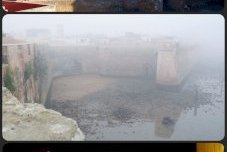
As was the case for Els, I wasn't expecting much from Mazagan but it turned out to be a very positive visit. Even its evaluation report widely praised it, with hardly any contestation. It is a reminder of a cardinal rule in appreciating World Heritage Sites: it is not all about beauty, the superlatives, and the thrills one can offer; rather look for what makes it exceptional and unique. I spent two half-days and one night in the small fortified city, so I was able to witness its splendor in broad day light, its quiet evening charm, as well as its bemusing side when it was totally shrouded in thick fog during the early morning walk along the walls. My interest in making this review was rekindled by my recent meeting with Dr. Jorge Correia, an Iberian colonial architecture professor from Portugal who did seminal studies on this Portuguese fort in the early 90s. It was a most providential encounter while he was visiting the churches and fortifications in my area. The findings of their studies were later on used as the backbone of the nomination of Mazagan into the World Heritage Site list. As he explained, if Mazagan were in Europe, it would hardly stand out. But its presence in Africa made the ultimate difference as its construction marked the very point when there was no turning back for the empire's expansion pursuits and that the important monuments are largely in tact considering that they are some of the …
Keep reading 0 comments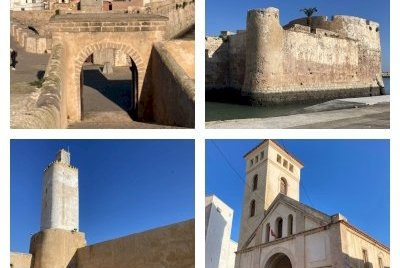
The Portuguese City of Mazagan turned out the biggest positive surprise of my short Moroccan coastal trip in January 2023. The site has been rated by others as of the least interest among Morocco's WHS, but just looking at the site’s intrinsic qualities and OUV, I believe this is not fair. Yes, I understand it is small and takes an hour at most to explore. But:
- It is really old. It dates from the very early stages of the explorations of the Portuguese outside Europe (1514). Among the many Portuguese colonial forts around the world, this one is the second oldest that is still intact. The only older one is Elmina Castle in Ghana (part of the Gold Coast Forts WHS).
- It has barely changed since. Elmina was heavily used by the Dutch and British in the 17th-19th centuries, while Mazagan was abandoned after the Portuguese left in 1769. The fortress town, therefore, has kept its original layout, some buildings, and the ramparts. Only the residential buildings of the Moroccans that settled here from the mid-19th century on, are additions, as well as an entrance gate built during the French protectorate.
- It has kept the church buildings intact. The 16th-century Portuguese Church of the Assumption still holds the primary position in town. OK, the Moroccans that took over and renamed the town El Jadida turned a higher watchtower into the minaret of their mosque. But they didn’t destroy the churches.
I visited Mazagan as …
Keep reading 0 comments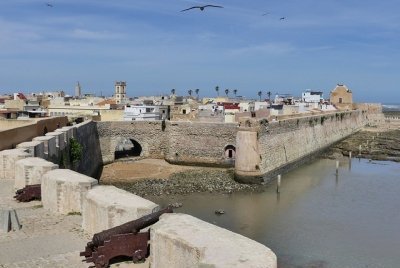
I visited this WHS in April 2018. Just as Essaouira was formerly known as Mogador, El Jadida was known as Mazagan. Both fortified towns are along the Atlantic coast and both have their own charm even though El Jadida is definitely smaller and lacks the medina atmosphere.
Apart from wandering in the few streets with bilingual names and alphabets in Portuguese and Arabic, the only three things to do here are walking on the fortified walls with a very picturesque view (photo - best time is in the morning), visiting the underground cistern and visiting the Manueline Church of the Assumption.
El Jadida in a way is quite similar to the Three Cities or Mdina in Malta and the Cittadella in Victoria/Rabat, Gozo. Next to the entrance gate is a tower-like monument with the UNESCO WHS inscription plaque. As a little trivia, the UNESCO symbol on the plaque is upside down!
All in all El Jadida is a worthwhile half day trip from Rabat and you can easily stop half way to take in Casablanca too. La Capitainerie is a hidden gem of a restaurant within a former church/chapel and their hummus, calamari dish and/or seafood tajine alone are worth the visit!
Keep reading 0 comments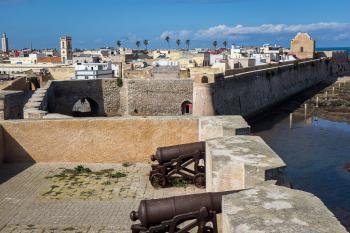
This old Portuguese fortified town is quite small and it doesn't take too long to walk through it and get a sense of the place. It's quite interesting in the way it was designed and the historical significance in indisputable. There are some nice views from the walls but, other than that, there's not a whole lot to see.
There were not many visitors at all when I came and I guess it's not the most popular place in the country. In fact, I didn't bother staying the night here and got the train up to Rabat afterwards (although that did get me in quite late).
Keep reading 0 comments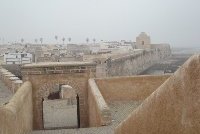
I travelled to El Jadida by train from Casablanca-Voyageurs, then took a petit taxi to visit the Portuguese city.
This was very compact area contained within walls and bastions. The connections to Portugal were limited however to an underground cistern and the Church of the Assumption.
Keep reading 0 comments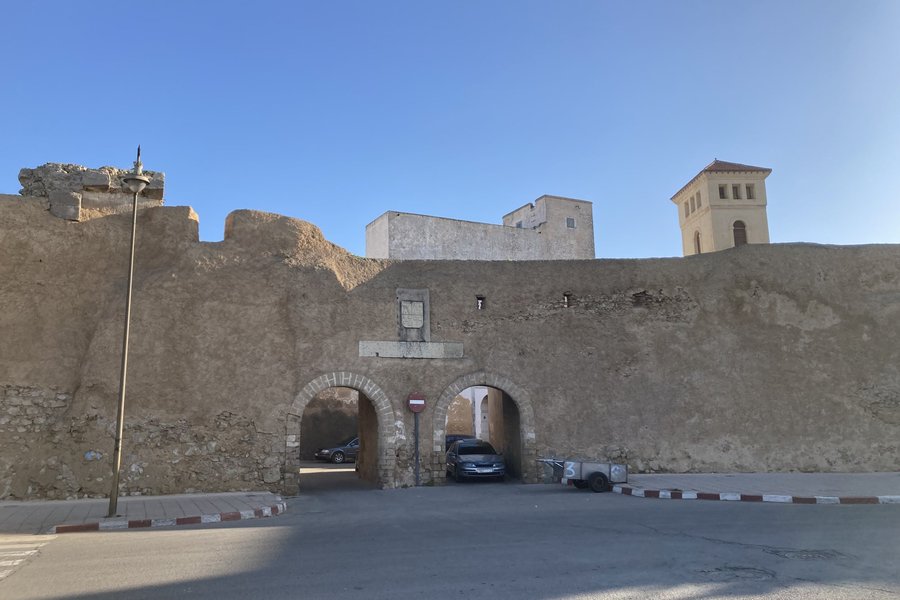
The portuguese city is old that's why it's in ruins. El Jadida is full of really great people both in 2001 and 2004 when I went. Everywhere life is bustling and everyone is ready to roll out the red carpet for visitors. The beach Sidi Bouzid is beautiful and worthy of its fame. El Jadida is more than just the Old City. The cafes are quaint and the food is good. Now that it's been so built-up it's well worth a stop. Essaouira was freezing in September due to the wind. El Jadida was and will be my favorite and if you're looking for the real Morocco, not shopping centers in Casa or touristy games in Marrakech then I recommend El Jadida.
Keep reading 0 comments
Nothing has changed in El-Jadida recently. I was in January 2009 and the conditions in old medina are appaling. Litter everwhere, old Portugese churches are closed, many houses are ruined, mosques are closed for non-muslims as usual. Despite that it is worth visiting - walls are strong and well preserved, Portugese cistern is a "must" to see and really interesting. The most impressing view of Mazagan is from the pier in fishing port, especially in the early morning of sunshine day - recommended.
Keep reading 0 comments
